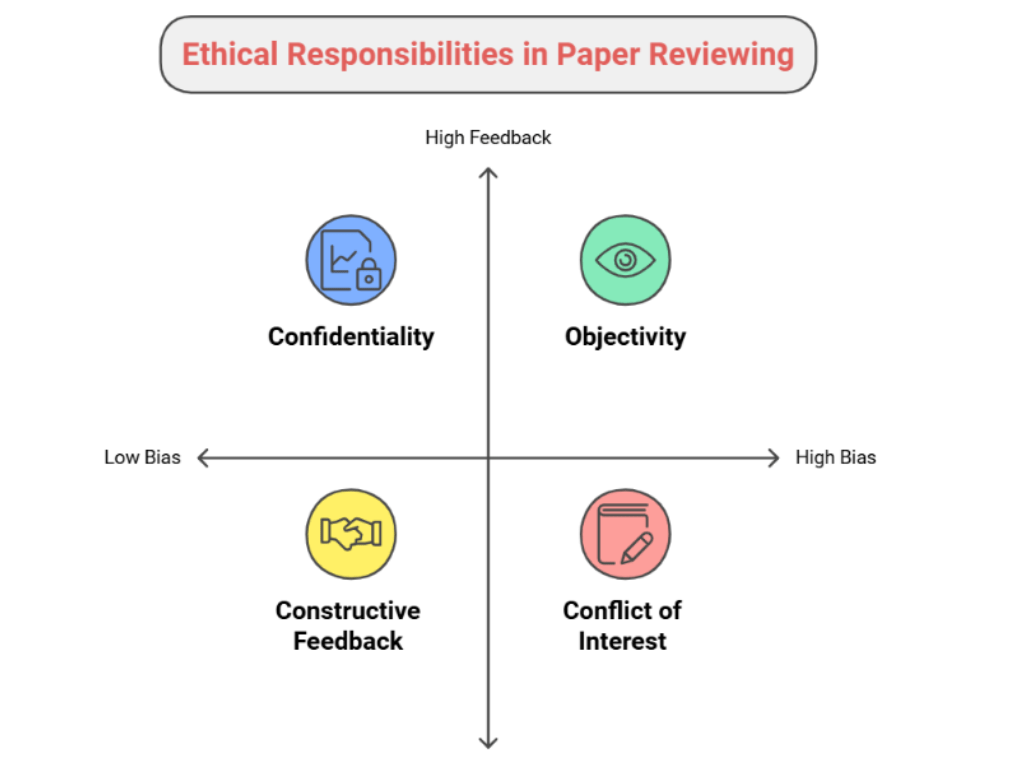
Writing a research paper can seem like a big task. But with the right steps and mindset, you can do it efficiently and confidently. In this guide, we break down the process into simple, clear stages. Whether you’re a beginner or need a refresher, this post is for you.

1. Choose a Clear Topic
Your topic should be:
- Specific
- Interesting to you
- Relevant to your field
Avoid vague or overly broad topics. Instead of “Climate Change,” go for “Impact of Climate Change on Crop Yield in South Asia.”
2. Do Background Reading
Before diving deep, do some initial research:
- Understand key terms and ideas
- Identify past studies
- Note current debates or gaps
This helps you know what’s already done and what needs more study.
Do you need a tool to help you in writing a research paper?
Meet AnswerThis – a tool specifically designed for writing research papers.
With AnswerThis, you can:
- Conduct a literature review
- Create paper outline
- Use AI editor to write papers
- Identify research gaps
- Paraphrase your writing
- And much more
Try it for FREE – www.answerthis.io
3. Formulate Your Research Question
This is the core of your paper. A good research question is:
- Focused
- Researchable
- Meaningful
Example: “How does daily screen time affect sleep quality among teenagers?”
4. Develop a Hypothesis
If your paper includes experiments or tests, create a hypothesis—a prediction you can test.
Example: “Increased screen time reduces sleep quality in teenagers.”
5. Choose a Research Method
Select how you’ll conduct your study:
- Quantitative: Surveys, experiments, data analysis
- Qualitative: Interviews, observations
- Mixed methods: A blend of both
Your method depends on your question
6. Design Data Collection
Plan your data collection step:
- Choose participants (if needed)
- Select tools (questionnaires, tests)
- Follow ethical guidelines
Good planning saves time and improves accuracy
7. Collect Data
Execute your plan and gather data. Be organized and consistent.
Tips:
- Record everything
- Keep backups
- Stay objective
8. Analyze Data
Now, make sense of what you found:
- Use statistical tools (e.g., SPSS, R)
- Code qualitative responses
- Create tables and charts
Be careful to avoid bias in analysis.
9. Interpret Your Results
Ask:
- What do the numbers or themes say?
- Do they support your hypothesis?
- What do they mean in context?
Connect your findings with your question.
10. Create an Outline
Structure makes writing easier. Common research paper sections include:
- Abstract
- Introduction
- Literature Review
- Methods
- Results
- Discussion
- Conclusion
- References
10. Write the Introduction
Introduce your topic. Explain:
- Why it matters
- What is known already
- What your paper will do
End this section with your research aim or question.
12. Do the Literature Review
Summarize previous work related to your topic. Show:
- What has been studied
- What gaps remain
- How your paper fills a gap
Always cite your sources
13. Describe Your Methods
Be clear and detailed. Another researcher should be able to repeat your work based on your explanation.
Include:
- Participants
- Procedures
- Tools
Data analysis methods
14. Present the Results
Use tables, graphs, and text. Don’t interpret here—just report.
Example: “Group A slept an average of 6 hours, while Group B slept 8 hours.”
15. Discuss the Findings
Now interpret your results. Explain:
- Why the results matter
- How they compare to past studies
- What limitations exist
This is where your insights shine
16. Write the Conclusion
Summarize:
- What you found
- Why it matters
- What could be done next
Don’t just repeat the abstract—add value.
17. Draft the Abstract
Write this last, but place it at the top of your paper. A good abstract includes:
- Purpose
- Methods
- Key results
- Main conclusion
Keep it short and focused.
18. Format Your References
Use the required citation style (APA, MLA, IEEE, etc.). Common tools:
- Zotero
- EndNote
- Mendeley
Ensure all sources are cited correctly.
19. Proofread and Edit
Check for:
- Spelling and grammar
- Clarity
- Logical flow
It’s best to take a break before proofreading so you can spot mistakes more easily.
20. Get Feedback and Revise
Share your paper with:
- A peer
- A supervisor
- A writing tutor
Be open to criticism. Revise to improve structure, clarity, and argument.
Final thoughts:
Writing a research paper is a process. It requires planning, patience, and persistence. But by following these steps, you’ll produce a strong and credible piece of academic writing.
Remember:
- Start early
- Be consistent
- Don’t be afraid to seek help
Now you’re ready to write your next (or first!) great paper.
Don’t forget to read: 10 Tips for PhD Thesis Writing
Happy publishing!




